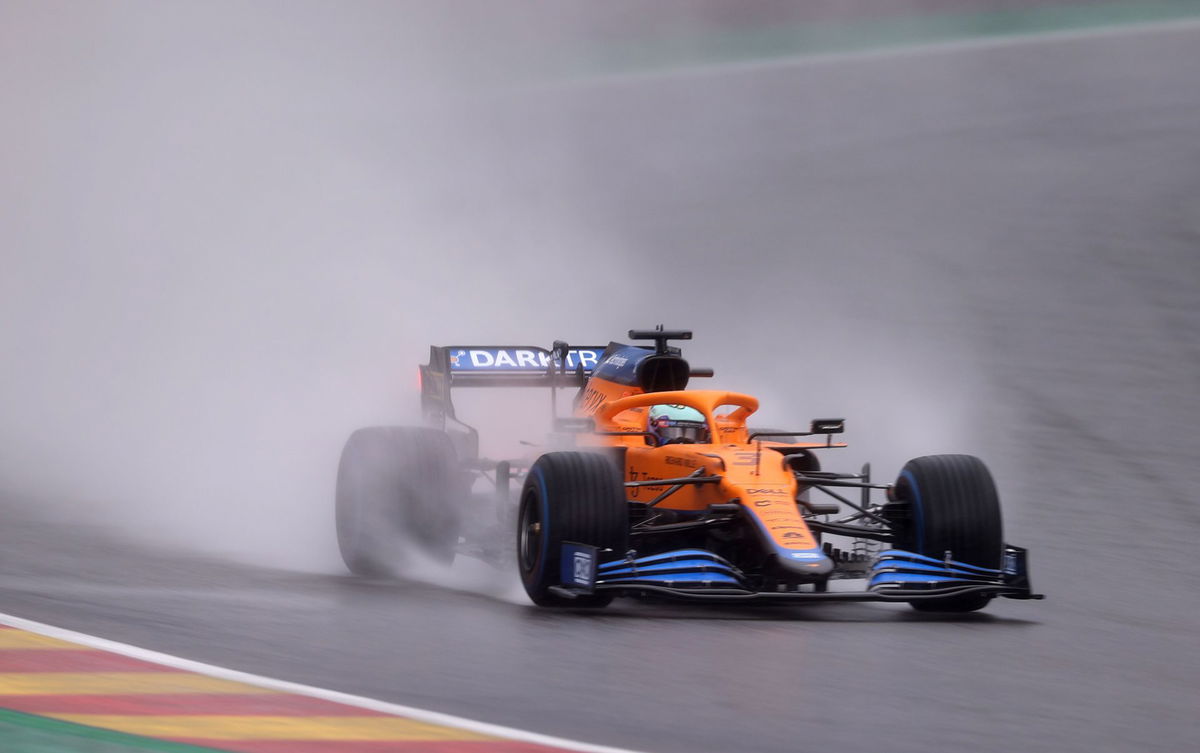
Imago
Daniel

Imago
Daniel
Formula 1 as a sport is quite difficult to understand when you start watching it on day 1. However, as each day passes, the sport becomes clearer. What doesn’t get clearer easily, however, is the jargon used in F1. F1 as a sport is quite jargon-heavy. And aquaplaning is one such jargon.
Watch What’s Trending Now!
By the term ‘aqua’ itself, one can understand that it’s related to water. Aqua or ‘Aquia’ has come from Latin and means water or anything related to water. This term is usually used in scientific and technical terms.
ADVERTISEMENT
Admittedly, aquaplaning in F1 is when there is stagnant water on the track, which can result in cars losing their grip on the tarmac and going into an uncontrollable spin. When such conditions arise during a race, qualifying, or practice session, the situation is termed aquaplaning.
ADVERTISEMENT
READ MORE: Not the High-Speed Spa Shunt! Lando Norris Discloses His Scariest Motorsport Crash Ever
F1 fans would remember one such occasion when aquaplaning happened with Lando Norris. The McLaren driver still regrets losing the race in Sochi. Norris who was leading the 2021 Russian Grand Prix race till the later stages, refused to change to intermediate tires, spun and threw away his chance of winning his first ever Grand Prix.
ADVERTISEMENT
Effective ways to tackle aquaplaning in F1
Since aquaplaning only occurs during rain, there are effective ways to tackle it. Pirelli, the sole tire provider of F1, usually provides every team with three compounds out of five compounds. They are hard, mediums, and soft.
However, under rainy circumstances, Pirelli provides the teams with intermediate and wet weather tires. The intermediate tires deem to be the best, as they can work both on a drying surface as well as on the wet tracks when there’s no standing water. Intermediate tires can dissipate about 30 liters of tires every second at 300 km/h speed.
ADVERTISEMENT
Did you know the difference between F1 tyre compounds? ❓💬 pic.twitter.com/JspQgYhdl2
— McLaren (@McLarenF1) August 31, 2021
However, if there is heavy rain, then the wet weather tires come into play. They’re specifically designed by Pirelli to have special technology to battle the water on the track. They’ve extra grip fitted on the rubber and can evacuate 85 liters of water per second at 300 km/h.
WATCH THIS STORY: Drivers To Be Granted A Citizenship In Multiple Countries
ADVERTISEMENT
F1 in rain becomes a risky affair since high speed can lead to crashes. One might think why the races aren’t canceled under such circumstances. One of the reasons for that is F1 races are too expensive to cancel. Hence, the tire manufacturers and teams try every possible way to get the most out of their machineries even in rainy weather. But aren’t wet races more fun?
ADVERTISEMENT
ADVERTISEMENT
ADVERTISEMENT

